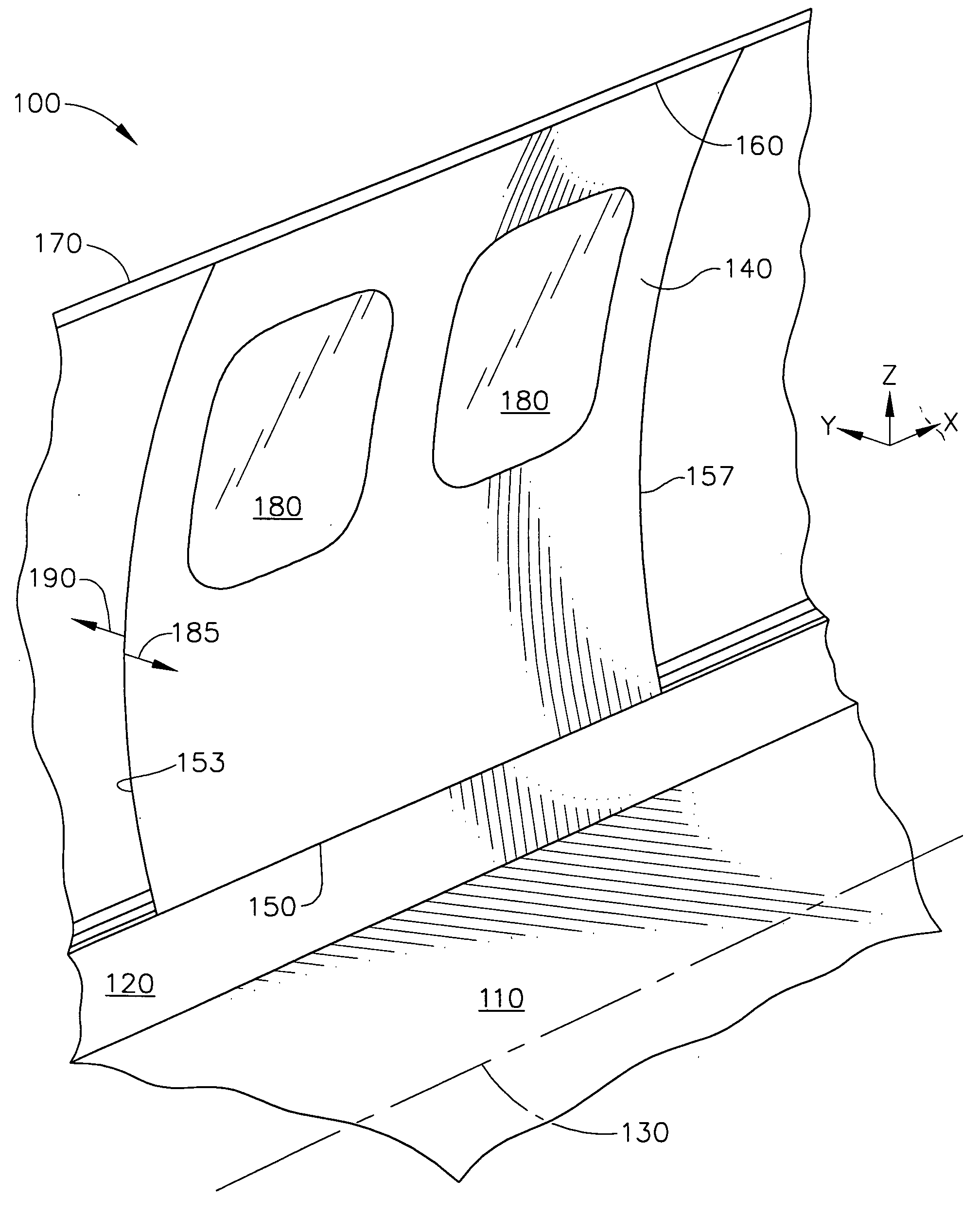Integrated window belt system for aircraft cabins
- Summary
- Abstract
- Description
- Claims
- Application Information
AI Technical Summary
Benefits of technology
Problems solved by technology
Method used
Image
Examples
Embodiment Construction
[0029] The following detailed description is of the best currently contemplated modes of carrying out the invention. The description is not to be taken in a limiting sense, but is made merely for the purpose of illustrating the general principles of the invention, since the scope of the invention is best defined by the appended claims.
[0030] For ease of understanding the orientation in the drawings, the terms “inside”, “inboard”, and “interior” shall refer a direction oriented from the viewpoint of a person standing within the cabin of the aircraft, and the terms “outside”, “outboard”, and “exterior” shall refer to a direction oriented from the viewpoint of a person outside of the cabin observing the aircraft. Thus, a sidewall trim panel will have an interior side and an exterior side, where the interior side is that surface of the installed panel as seen by a person within the cabin of the aircraft and the exterior side is that surface of the installed panel that is seen by a pers...
PUM
 Login to View More
Login to View More Abstract
Description
Claims
Application Information
 Login to View More
Login to View More - R&D
- Intellectual Property
- Life Sciences
- Materials
- Tech Scout
- Unparalleled Data Quality
- Higher Quality Content
- 60% Fewer Hallucinations
Browse by: Latest US Patents, China's latest patents, Technical Efficacy Thesaurus, Application Domain, Technology Topic, Popular Technical Reports.
© 2025 PatSnap. All rights reserved.Legal|Privacy policy|Modern Slavery Act Transparency Statement|Sitemap|About US| Contact US: help@patsnap.com



